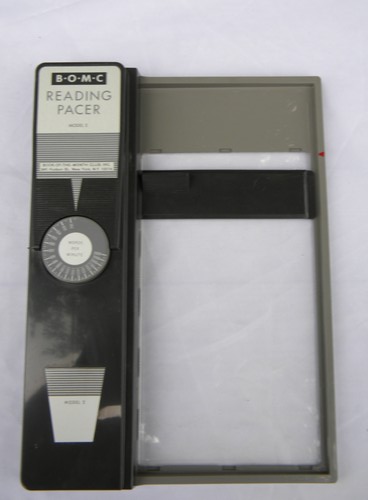
There was no difference between the groups in their understanding of less important information from the text.
#Speed reader full#
They found that the main points of the full text were better understood after skimming (which could view the full text) than after normal reading (which only read half the text). Duggan & Payne (2009) compared skimming with reading normally, given only enough time to read normally through half of a text. Skimming is mainly used for researching and getting an overall idea of a text, especially when time is limited. Proficient readers are able to read 280–350 wpm without compromising comprehension. Subvocalization readers (Mental readers) generally read at approximately 250 words per minute, auditory readers at approximately 450 words per minute and visual readers at approximately 700 words per minute. Visual reading: understanding the meaning of the word, rather than sounding or hearing.Auditory reading: hearing out the read words.Subvocalization: sounding out each word internally, as reading to yourself.A better focus in comprehension is attained through a better reading process with good understanding of the topic. These processes help an individual to retain most of the presented ideas from a reading material. Another important method for better comprehension is the SQ3R process. In speed reading practice this is done through multiple reading processes: preview, overview, read, review and recite and by read and recall (recording through writing a short summary or a mental outline) exercises. Reading a text involves comprehension of the material. Speed reading is a skill honed through practice.

An emphasis on viewing each word, albeit briefly without regression (Regression is an unconscious process where the eyes go forward two or three "stops" and then go back.) is required for this method to be effective. Because this encourages the eye to skim over the text, it can reduce comprehension and memory, and lead to missing important details of the text. It has also been claimed to reduce subvocalization (saying words in your head rather than grasping the idea), thereby speeding up reading. For example, an audience of customers at a speed reading seminar will be instructed to use a finger or pen to make these shapes on a page and told that this will speed up their visual cortex, increase their visual span to take in the whole line, and even imprint the information into their subconscious for later retrieval. It involves drawing invisible shapes on a page of text in order to broaden the visual span for speed reading. Meta guiding is the visual guiding of the eye using a finger or pointer, such as a pen, in order for the eye to move faster along the length of a passage of text. Scanning includes the main point as well as headings and important information. These techniques are used by meta-guiding your eyes. Scanning is the process where one actively looks for information using a mind-map (organizing information in a visually hierarchical manner that showcases the interrelatedness of the information for better retrievability) formed from skimming. It is conducted at a higher rate (700 words per minute and above) than normal reading for comprehension (around 200–230 wpm), and results in lower comprehension rates, especially with information-rich reading material. Skimming is usually seen more in adults than in children. For some people, this comes naturally, but is usually acquired by practice. Skimming is a process of speed reading that involves visually searching the sentences of a page for clues to the main idea or when reading an essay, it can mean reading the beginning and ending for summary information, then optionally the first sentence of each paragraph to quickly determine whether to seek still more detail, as determined by the questions or purpose of the reading. Methods and principles Skimming and scanning Wood first taught the method at the University of Utah, before launching it to the public as Evelyn Wood's Reading Dynamics in Washington, D.C.

In 1958, while brushing off the pages of a book she had thrown, she noticed that the sweeping motion of her hand across the page caught the attention of her eyes, and helped them move more smoothly across the page.

She was reportedly curious why some people were naturally faster at reading, so tried to force herself to read very quickly. The term "speed reading" is thought to have been coined in the late 1950s by Evelyn Wood, a schoolteacher.


 0 kommentar(er)
0 kommentar(er)
